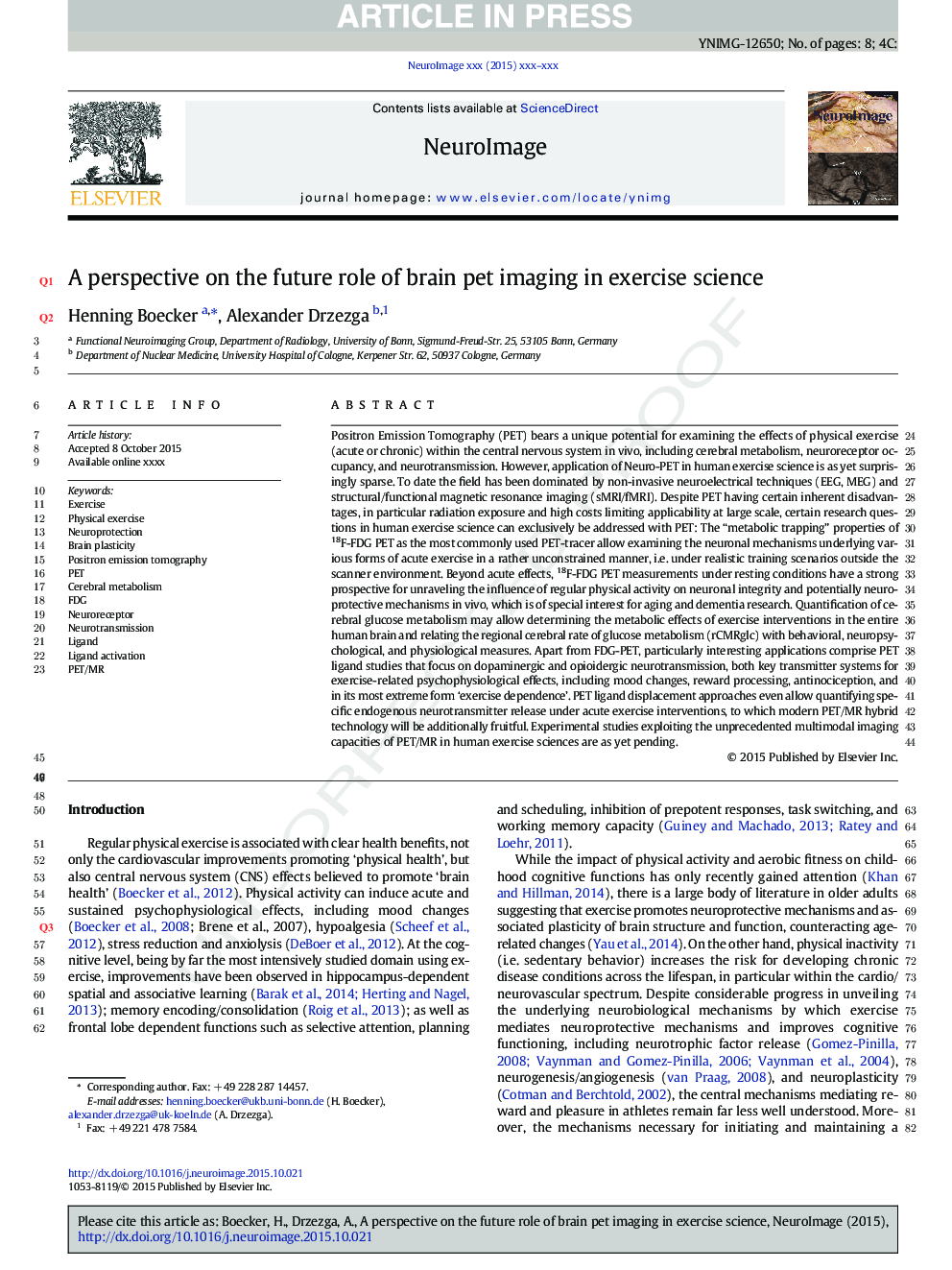| کد مقاله | کد نشریه | سال انتشار | مقاله انگلیسی | نسخه تمام متن |
|---|---|---|---|---|
| 6023788 | 1580877 | 2016 | 8 صفحه PDF | دانلود رایگان |
عنوان انگلیسی مقاله ISI
A perspective on the future role of brain pet imaging in exercise science
ترجمه فارسی عنوان
چشم انداز نقش بعدی تصویربرداری حیوان خانگی مغز در علوم ورزشی
دانلود مقاله + سفارش ترجمه
دانلود مقاله ISI انگلیسی
رایگان برای ایرانیان
کلمات کلیدی
موضوعات مرتبط
علوم زیستی و بیوفناوری
علم عصب شناسی
علوم اعصاب شناختی
چکیده انگلیسی
Positron Emission Tomography (PET) bears a unique potential for examining the effects of physical exercise (acute or chronic) within the central nervous system in vivo, including cerebral metabolism, neuroreceptor occupancy, and neurotransmission. However, application of Neuro-PET in human exercise science is as yet surprisingly sparse. To date the field has been dominated by non-invasive neuroelectrical techniques (EEG, MEG) and structural/functional magnetic resonance imaging (sMRI/fMRI). Despite PET having certain inherent disadvantages, in particular radiation exposure and high costs limiting applicability at large scale, certain research questions in human exercise science can exclusively be addressed with PET: The “metabolic trapping” properties of 18F-FDG PET as the most commonly used PET-tracer allow examining the neuronal mechanisms underlying various forms of acute exercise in a rather unconstrained manner, i.e. under realistic training scenarios outside the scanner environment. Beyond acute effects, 18F-FDG PET measurements under resting conditions have a strong prospective for unraveling the influence of regular physical activity on neuronal integrity and potentially neuroprotective mechanisms in vivo, which is of special interest for aging and dementia research. Quantification of cerebral glucose metabolism may allow determining the metabolic effects of exercise interventions in the entire human brain and relating the regional cerebral rate of glucose metabolism (rCMRglc) with behavioral, neuropsychological, and physiological measures. Apart from FDG-PET, particularly interesting applications comprise PET ligand studies that focus on dopaminergic and opioidergic neurotransmission, both key transmitter systems for exercise-related psychophysiological effects, including mood changes, reward processing, antinociception, and in its most extreme form 'exercise dependence'. PET ligand displacement approaches even allow quantifying specific endogenous neurotransmitter release under acute exercise interventions, to which modern PET/MR hybrid technology will be additionally fruitful. Experimental studies exploiting the unprecedented multimodal imaging capacities of PET/MR in human exercise sciences are as yet pending.
ناشر
Database: Elsevier - ScienceDirect (ساینس دایرکت)
Journal: NeuroImage - Volume 131, 1 May 2016, Pages 73-80
Journal: NeuroImage - Volume 131, 1 May 2016, Pages 73-80
نویسندگان
Henning Boecker, Alexander Drzezga,
